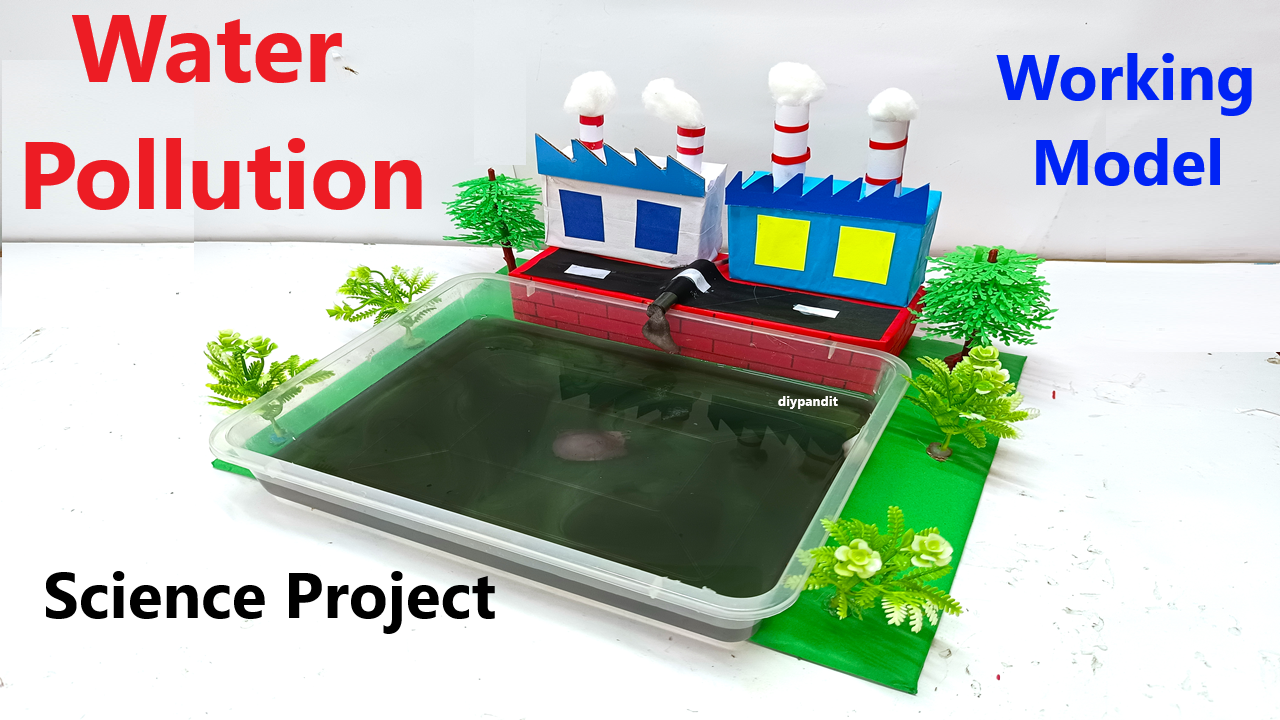Introduction
Water is one of the most essential resources for life on Earth. It covers about 71% of the Earth’s surface and is vital for drinking, agriculture, industry, and sanitation.

Clean water is crucial for maintaining health and ecological balance. However, due to human activities and natural factors, water bodies like rivers, lakes, oceans, and groundwater are being polluted.
Water pollution refers to the contamination of water by harmful substances that make it unsafe for drinking, irrigation, and aquatic life. It is a serious global issue that threatens human health, biodiversity, and the environment.
Definition of Water Pollution
Water pollution is the presence of physical, chemical, or biological substances in water in such concentrations that they are harmful to living organisms or make water unfit for its intended use.
Causes of Water Pollution

Water pollution can occur due to various natural and human-made factors.
1. Industrial Waste
- Factories release chemicals like heavy metals, acids, dyes, and oils into water bodies.
- These pollutants can kill aquatic life and contaminate drinking water.
2. Agricultural Runoff
- Fertilizers, pesticides, and insecticides used in farming often wash into rivers and lakes.
- They cause eutrophication, which leads to excessive growth of algae and depletion of oxygen in water.
3. Domestic Sewage
- Household wastewater contains detergents, soaps, food waste, and pathogens.
- Untreated sewage contaminates water and spreads diseases.
4. Plastic Pollution
- Plastic bags, bottles, and microplastics accumulate in rivers and oceans.
- They harm fish, turtles, and other aquatic animals.
5. Oil Spills
- Accidental oil spills from ships and refineries create a thin layer on water surfaces, affecting marine life.
6. Radioactive Waste
- Nuclear plants and improper disposal of radioactive materials can pollute water.
7. Natural Causes
- Volcanic eruptions, soil erosion, and floods can introduce sediments and minerals into water, affecting its quality.
Effects of Water Pollution

1. On Human Health
- Drinking polluted water can cause diseases like cholera, diarrhea, dysentery, hepatitis, and typhoid.
- Heavy metals like mercury and lead can damage kidneys, liver, and nervous system.
2. On Aquatic Life
- Pollutants reduce oxygen levels, killing fish and other organisms.
- Algal blooms block sunlight, affecting underwater plants.
- Oil spills coat fish and birds, preventing them from breathing or flying.
3. On Environment
- Polluted water affects soil quality and agriculture.
- Eutrophication leads to the formation of dead zones in water bodies.
- Water pollution can cause imbalance in ecosystems and biodiversity loss.
Methods to Control Water Pollution

1. Prevention
- Avoid dumping industrial waste directly into rivers or lakes.
- Proper treatment of domestic sewage.
- Reduce the use of chemical fertilizers and pesticides.
- Ban or limit single-use plastics.
2. Water Treatment Techniques
- Sedimentation – Letting heavy particles settle at the bottom.
- Filtration – Removing suspended solids using sand or charcoal filters.
- Chemical Treatment – Using chlorine or ozone to kill pathogens.
- Biological Treatment – Using microbes to degrade organic matter (bioremediation).
- Reverse Osmosis – Removing dissolved salts and toxins.
3. Community Awareness
- Educating people about water conservation and pollution prevention.
- Organizing clean-up drives for rivers, lakes, and ponds.
Experiments and Demonstrations
1. Detecting Water Pollution
- Collect water samples from a river, pond, or tap water.
- Test for pH using litmus paper.
- Observe turbidity by holding the sample against a light source.
- Optional: Test for presence of E. coli using culture plates (under supervision).
2. Oil Spill Simulation
- Take a bowl of water and pour oil on top.
- Observe how oil spreads and discuss methods to remove it using absorbent materials.
3. Filtration Experiment
- Filter muddy water using sand, gravel, and cotton layers.
- Observe the reduction in turbidity.
4. Effects of Detergents
- Add small amounts of detergent to water containing plants or small fish.
- Observe changes in water surface tension and effect on aquatic life.
Government Initiatives to Control Water Pollution
- Water (Prevention and Control of Pollution) Act, 1974 – Regulates industrial discharge and protects water quality.
- National River Conservation Plan (NRCP) – Focuses on cleaning polluted rivers in India.
- Bans on Plastic and Improper Waste Disposal – Encourages responsible behavior.
- Awareness Programs – Educating citizens on water conservation and pollution prevention.
Role of Students
Students can play a vital role in preventing water pollution:
- Avoid littering water bodies.
- Participate in river or pond cleaning drives.
- Educate family and community about water conservation.
- Reuse and recycle water wherever possible.
- Promote organic farming and reduce use of chemicals.
Interesting Facts
- 70% of the Earth’s surface is water, but only 3% is freshwater suitable for drinking.
- Water pollution affects more than 1 billion people worldwide who lack access to clean drinking water.
- The Ganges, one of the longest rivers in India, has been a focus of extensive cleaning projects due to severe pollution.
- Industrial effluents contain heavy metals like mercury, cadmium, and lead, which can bioaccumulate in the food chain.
Conclusion
Water pollution is a severe problem that affects humans, animals, and the environment.
The primary causes include industrial waste, domestic sewage, agricultural runoff, and improper disposal of plastics.
The effects are harmful, causing diseases, killing aquatic life, and damaging ecosystems.
Preventive measures, water treatment, and public awareness are crucial to reduce water pollution. Students, communities, and governments must work together to protect this vital resource.
By adopting sustainable practices, promoting clean water initiatives, and minimizing pollutants, we can ensure safe water for future generations.

